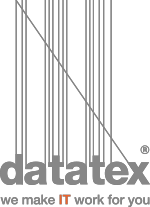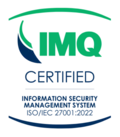Nonwoven Fabrics: A Guide to Non-woven and Engineering Trends
Did you know that the global nonwoven fabrics market is projected to reach a value of nearly $48 billion by 2027?
But, first of all, is it nonwoven or non-woven? Or better yet: Why on earth some term would be defined by something it is NOT?
Now that you are done with googling the answers, join us in uncovering another interesting topic, since we are going to explore why nonwovens are so much more than just a negative form of woven.
In fact, nonwoven fabrics have become an extremely important segment of the textile industry, thanks to their well-engineered technical properties and wide application across various industries and this trend continues to grow rapidly.
Let’s explore the reasons behind this trend.
What are Non-woven Fabrics?
Nonwoven fabrics, also known as nonwovens or non-woven fabrics are made of natural or synthetic fibers that are first converted into a web-like structure, and bonded together either mechanically, thermally, or chemically. This web structure is then further stabilized by bonding the fibers together to create a strong and durable fabric.
Unlike traditional woven fabrics, nonwoven fabrics are not formed by weaving or knitting together yarns. Instead, they are engineered by bonding or interlocking fibers to form a cohesive structure.
Therefore, nonwoven fabric is not a singular material, but rather a category that includes various types of engineered fabrics. These fabrics can mimic the appearance, texture, and strength of traditional woven fabrics, while offering additional benefits in terms of performance and functionality.
New processing technologies allowed to enhance fabrics handling and drapability, tensile properties, abrasion resistance, pilling and washing stability, dyeing and printing. Nonwovens can be made absorbent, breathable, droppable, flame resistant, heat sealable, light, lint-free, modulable, soft, stable, stiff, tear resistant, and water repellent if needed. These features can also be combined in a single nonwoven product.
The primary raw material used to produce non-woven is polypropylene, made by crude oil, but recently due to growing environmental concerns, market participants have shifted their focus towards development of bio-based nonwoven fabrics.
Understanding the Unique Properties of Nonwovens
Nonwoven fabrics present a range of unique properties that set them apart from traditional woven textiles. These properties are often combined to create fabrics highly versatile and suitable for a wide variety of applications.
-Durability: These fabrics are known for their durability, offering a strong and resilient alternative to woven fabrics. The absence of a weave structure eliminates the risk of individual threads unraveling, resulting in a more durable fabric that can withstand frequent use and handling.
-Flexibility: Non-wovens are inherently flexible, allowing them to adapt to different shapes and conform to various surfaces. This flexibility makes nonwovens ideal for applications that require a fabric to mold or wrap around objects.
-Absorbency: Nonwoven fabrics provide excellent absorbent properties, making them suitable for various absorbent applications, such as wipes and medical products. These fabrics can quickly absorb and retain liquids, ensuring efficient moisture control.
-Resistance to Liquids and Bacteria: They can be engineered to exhibit liquid repellency, making them highly suitable for use in products that require a barrier against fluids. Additionally, nonwovens can be treated with antibacterial coatings or infused with antimicrobial agents to inhibit the growth and spread of bacteria.
-Softness: Nonwoven fabrics offer a soft and gentle texture, providing comfort when in contact with the skin. This softness makes nonwovens preferable for applications requiring direct contact with sensitive surfaces, such as hygiene products and medical textiles.
-Washability: Nonwoven fabrics can be designed to withstand washing and cleaning processes without losing their integrity. This washability feature makes nonwovens suitable for reusable applications, such as reusable bags and protective garments.
-Strengths of a Woven Fabric: Although nonwovens differ from traditional woven fabrics, they can exhibit similar strengths and functionality. Nonwoven fabrics can provide the same level of strength and structural integrity as woven fabrics, depending on the specific manufacturing process and materials used.
-Variety of Applications: They are used in a wide range of applications across various industries. They are extensively employed in geotextiles to provide stability and erosion control in landscaping and civil engineering projects. Nonwovens also find application in web structures for filtration, insulation, and many other purposes.
Industrial Trends in Nonwoven Fabrics
The market of non-woven fabrics is rapidly growing for many reasons.
First of all, the technological advancements and the increasing awareness of consumers about the benefits of nonwoven products (the higher performances if compared with traditional fabrics made by weaving or knitting and good balance between product use-life).
Recently, one trend in particular is rapidly growing – the trend towards single-use fabric made of non-woven materials. This can be attributed to their convenience, affordability, and hygiene benefits.
Industries such as healthcare, personal care, and hospitals are increasingly relying on single-use nonwoven products like disposable masks, wipes, and gowns. These products help maintain cleanliness, reduce contamination risks, and ensure optimal safety for both professionals and consumers.
The second trend is a growing emphasis on Resilience and Thermal Insulation. With a greater focus on sustainable and energy-efficient solutions, nonwoven fabrics are being designed to provide superior thermal insulation while maintaining the lightweight and flexible characteristics that make them favorable. The inclusion of thermally insulating materials and innovative manufacturing techniques allows nonwoven fabrics to achieve excellent heat retention properties, making them ideal for applications in insulation, automotive, and construction industries.
Applications of Nonwoven Fabrics in the Manufacturing Industry
Just look around and you will see that there is no segment of life which does not include some form of nonwoven fabrics.
Lifestyles changes all over the world. In particular, there is a global increase of births, along with aged people that leads to a greater demand of nonwoven hygienic products. Also, the higher number of surgical procedures requires a lot of non-disposable nonwoven fabrics, we can all agree that the medical field is unthinkable without nonwoven products. SMS fabrics are a type of nonwoven fabric widely used in medical and hygiene products due to their excellent bacterial barrier and sterility properties.
Nonwoven filters play a crucial role in various filtration systems, offering several advantages over traditional filters made from woven fabrics. Due to their porous sheets and high filtration efficiency, nonwoven filters are commonly used to remove contaminants or particles from liquids or gases. Compared to traditional woven fabrics, nonwoven filters offer superior performance and can be tailored to provide specific filtration requirements.
The other important use of non-woven is in the construction sector where nonwoven geotextiles are used for soil stabilization and erosion control in civil engineering projects.
We must not forget Automotive industry and its specific requirements. Nonwoven fabrics can be incorporated into car seats and cushions, offering improved comfort, durability, and moisture management.
Also, nonwoven fabrics contribute significantly to the functionality and innovation seen in modern sportswear, agriculture, home furnishing and packaging. These are just a few examples of the diverse industries that rely on nonwoven fabrics for their unique properties and applications.
As the textile manufacturing industry evolves, embracing the potential of nonwoven fabrics, we can expect to see even more advancements, applications, and innovations in this dynamic field.
Nonwoven fabrics and NOW ERP by Datatex
DATATEX Solutions are used also in the non-woven sector which benefits from many industry related features in the system.
For the start, during the non-woven manufacturing and costing processes, it is required to move between weight and length units of measure. Some steps and calculations are based on weight, whereas others are based on length, so a system must seamlessly accommodate multiple units of measure on a product, in a process routing, and bill of material, while in inventory records an actual weight and length of a roll must be accommodated.
For non-woven products that get slit to narrower widths it is also required to accommodate square units of measure such as square yards or square meters. Narrow widths also require a process routing than can accommodate lengthwise slitting in a step.
For example, if physically the roll gets slit into 8 rolls of a narrower width the system must accommodate for x yards or meters entering a step and 8x yards or meters exiting the steps, all the while calculating the required machine time, setup time and bill of material requirements at the step correctly.
In particular, as far as the production process of a non-woven company is concerned, Datatex developed a specific solution for cut optimization CATS and MQM machine scheduling. This software is able to analyze the order book and the stock availability, in order to suggest a production plan that meets the delivery dates and optimized cutting, while minimizing the fabric waste.
Moreover, the module Quality, through specific interfaces, enables to gather the qualitative data that are detected by the devices used for the tests and to create analysis reports and quality certificates.
So, now you have the right software for your nonwovens.
Going back to the question from the beginning of this blog post, here’s the answer: you can use both terms, just be aware how important they are in today’s world.





